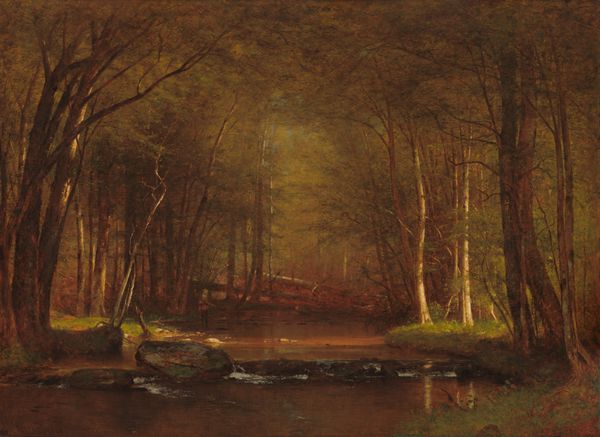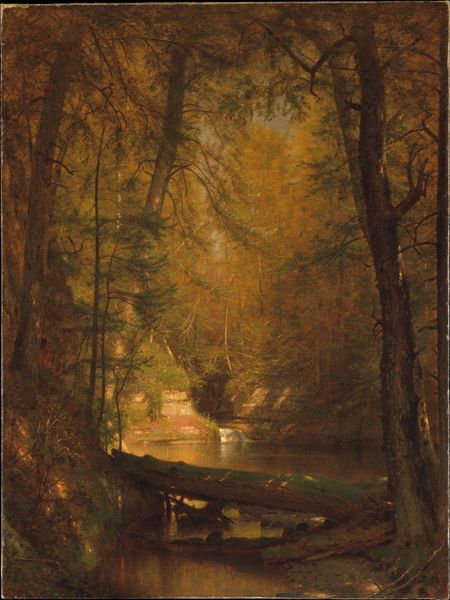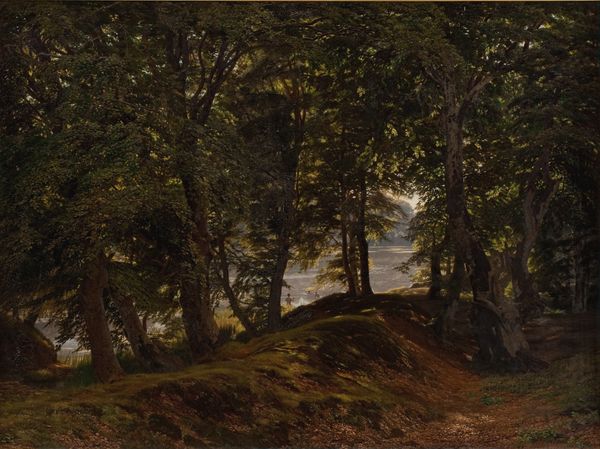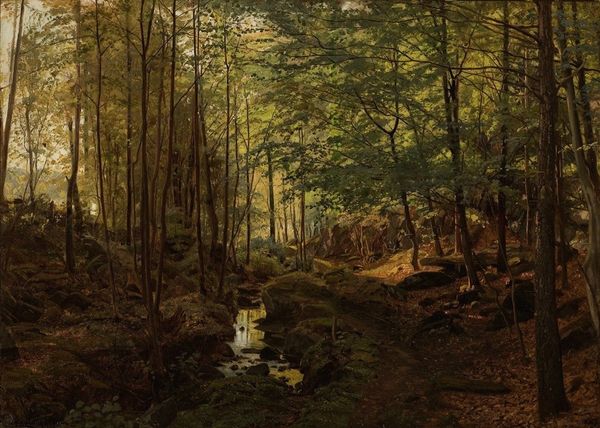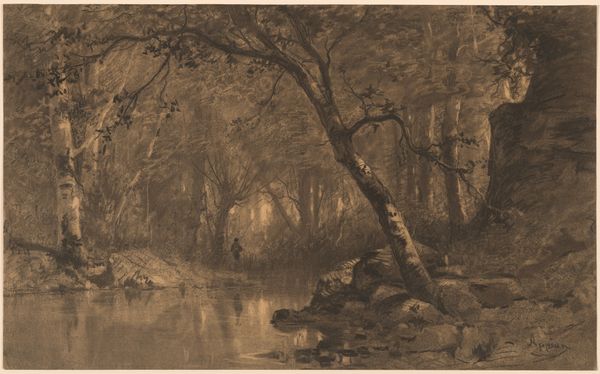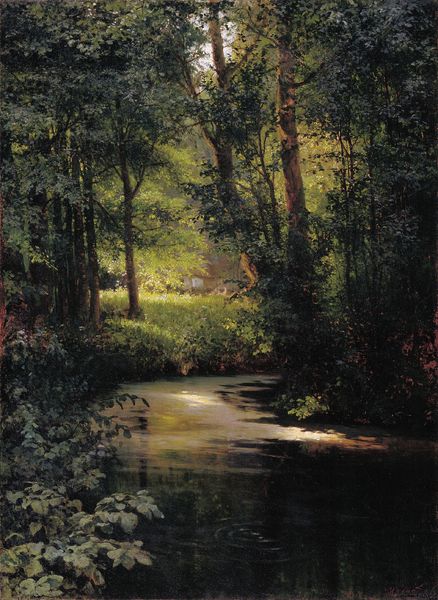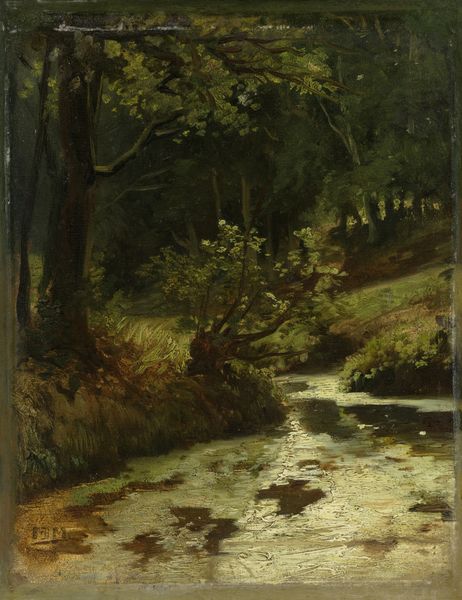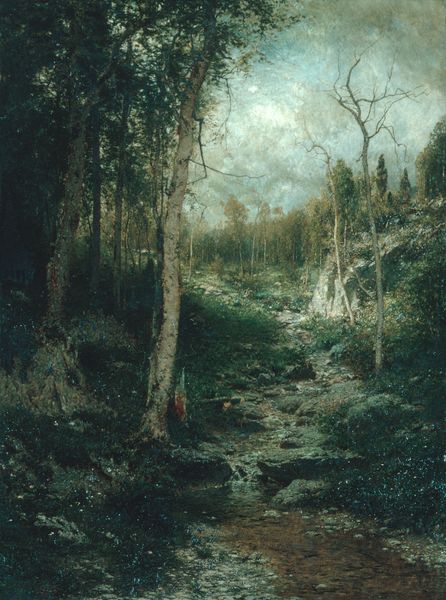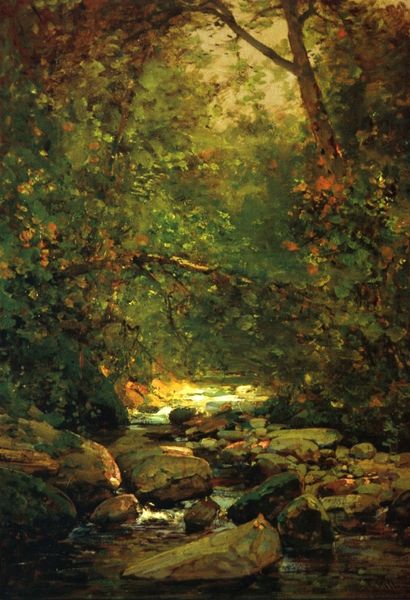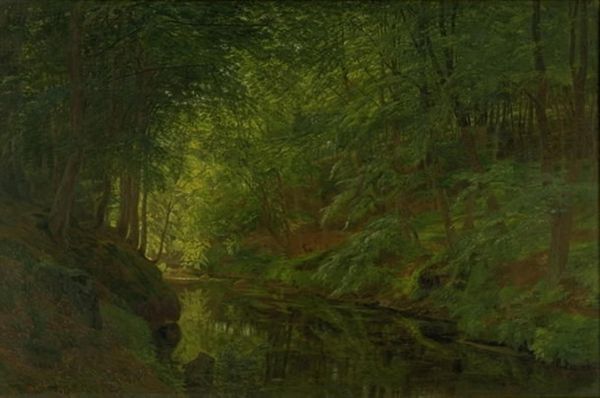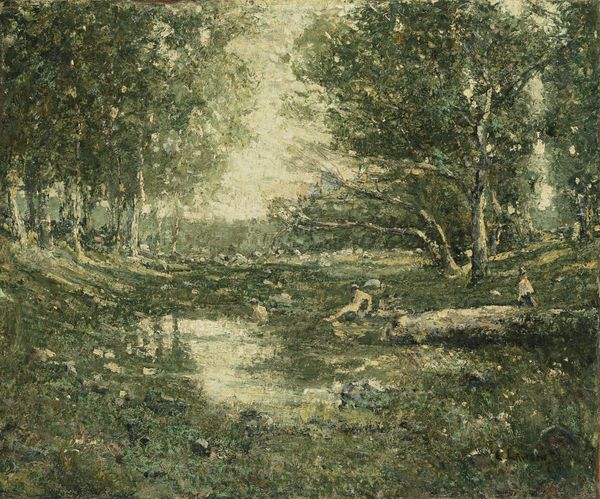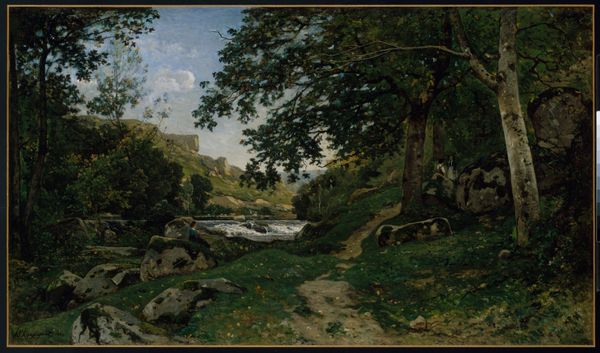
Dimensions: 28 x 36 in. (71.1 x 91.4 cm)
Copyright: Public Domain
Curator: Ah, Worthington Whittredge's "The Brook in the Woods," likely completed between 1882 and 1886. Look at how he's captured this slice of woodland—it just glows. Editor: Immediately, I see the stark contrast between the dappled sunlight illuminating parts of the trees and stream against the densely packed and rather somber dark green mass. How was this piece created, do you know? Curator: Well, Whittredge was dedicated to *plein-air* painting; this likely started as studies done directly in the woods. He was part of the second generation of the Hudson River School. He strived to record what he saw faithfully, enraptured by the transcendental, the serene in natural scenes. It's about being *in* it. Editor: Fascinating. When I consider this alongside Whittredge's artistic inclinations, I have to also think about the market for landscape paintings at this time, what would wealthy patrons spend their dollars on? And it seems this painting really leans into themes that resonate within an industrializing society—nature, refuge, escape. How self-conscious do you imagine Whittredge to have been? Curator: I bet a lot. And isn’t that something? Whittredge wants us to consider light on leaves, to experience the solitude… while understanding, too, it'll adorn someone’s opulent home. He might even consider himself some kind of landscape artisan for these wealthy collectors. It’s romanticism filtered through… commerce. He would set out with his gear, setting up his easel like he's heading into battle! But instead of bullets, it was pigments! Editor: Yes, that’s exactly the tension. His work and that of his peers created value not just for themselves but in the very spaces they depicted, influencing the development and preservation – or lack thereof – of natural spaces. It raises an important point regarding the economic influence that artistic communities exerted on land use. Curator: And look closely: those brushstrokes—loose and light but still controlled. There’s almost an embrace of the ephemeral quality of light. One really needs to see it in person at the Metropolitan Museum of Art to truly appreciate its subtle glow. Editor: Precisely, and with a bit more thinking about this picture and a wider awareness of Whittredge's motivations, his practice, and society at that time, one comes to have a much deeper appreciation.
Comments
No comments
Be the first to comment and join the conversation on the ultimate creative platform.
